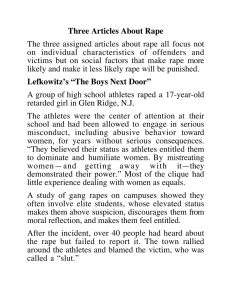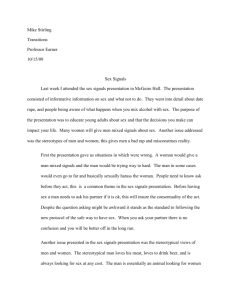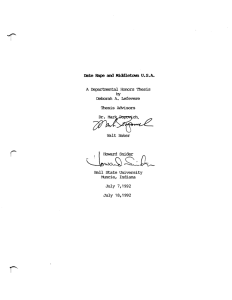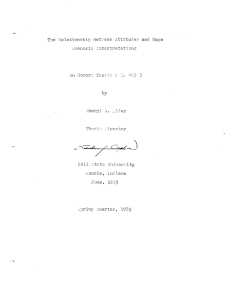Two Articles About Rape
advertisement
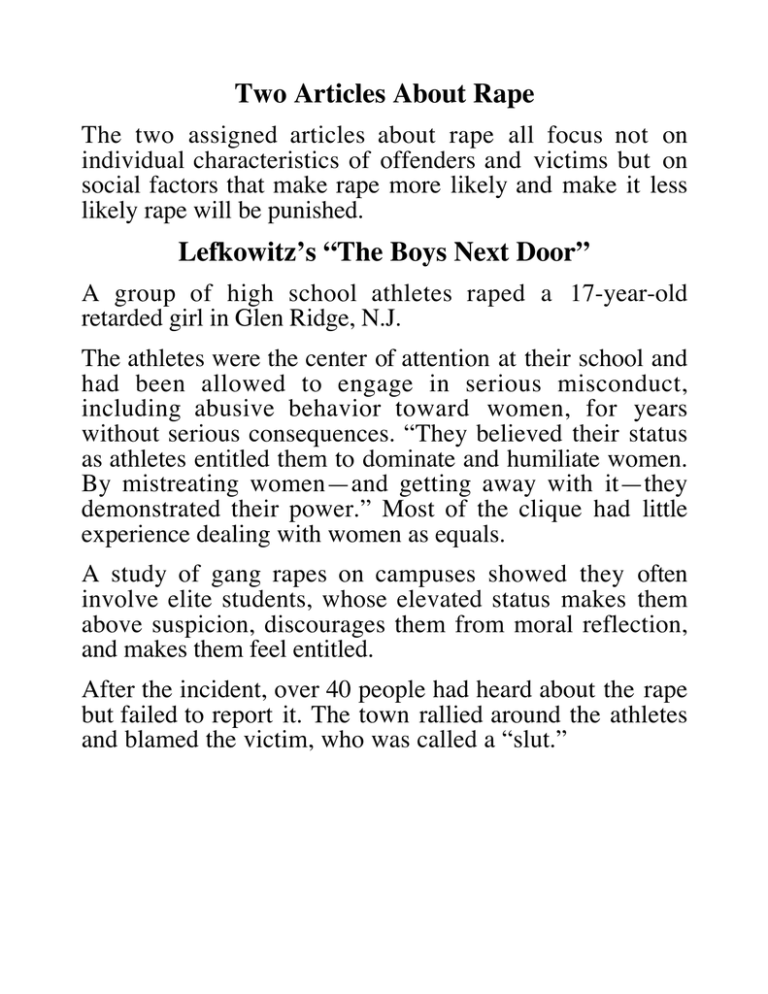
Two Articles About Rape The two assigned articles about rape all focus not on individual characteristics of offenders and victims but on social factors that make rape more likely and make it less likely rape will be punished. Lefkowitz’s “The Boys Next Door” A group of high school athletes raped a 17-year-old retarded girl in Glen Ridge, N.J. The athletes were the center of attention at their school and had been allowed to engage in serious misconduct, including abusive behavior toward women, for years without serious consequences. “They believed their status as athletes entitled them to dominate and humiliate women. By mistreating women—and getting away with it—they demonstrated their power.” Most of the clique had little experience dealing with women as equals. A study of gang rapes on campuses showed they often involve elite students, whose elevated status makes them above suspicion, discourages them from moral reflection, and makes them feel entitled. After the incident, over 40 people had heard about the rape but failed to report it. The town rallied around the athletes and blamed the victim, who was called a “slut.” Boswell & Spade’s “Fraternities and Collegiate Rape Culture” Rape culture is “a set of values and beliefs that provide an environment conductive to rape.” “Rape culture is based on the assumptions that men are aggressive and dominant whereas women are passive and acquiescent.” This article focuses more narrowly on “specific settings where rape is likely to occur.” The study compares high-risk fraternities to low-risk ones. Parties at low-risk houses: balanced gender ratio, crossgender socialization, women are treated with respect. Parties at high-risk houses: skewed gender ratio, little cross-gender socialization, men treated women with little respect, people were more hostile, loud music prevented communication, men discussed sexual exploits at next morning’s breakfast, dating relationships were discouraged in favor of “hooking up,” members were pressured to treat women negatively (especially when they were with other men), the double standard was institutionalized in practices like the “walk of shame.” Since group norms are different between contexts, people’s behavior changes from one situation (e.g., fraternity party or bar) to another. Men and women who didn’t support the rape culture participated in behaviors that supported it. For instance, women continued to “hook up” because they didn’t feel there was another means of socializing with men.
